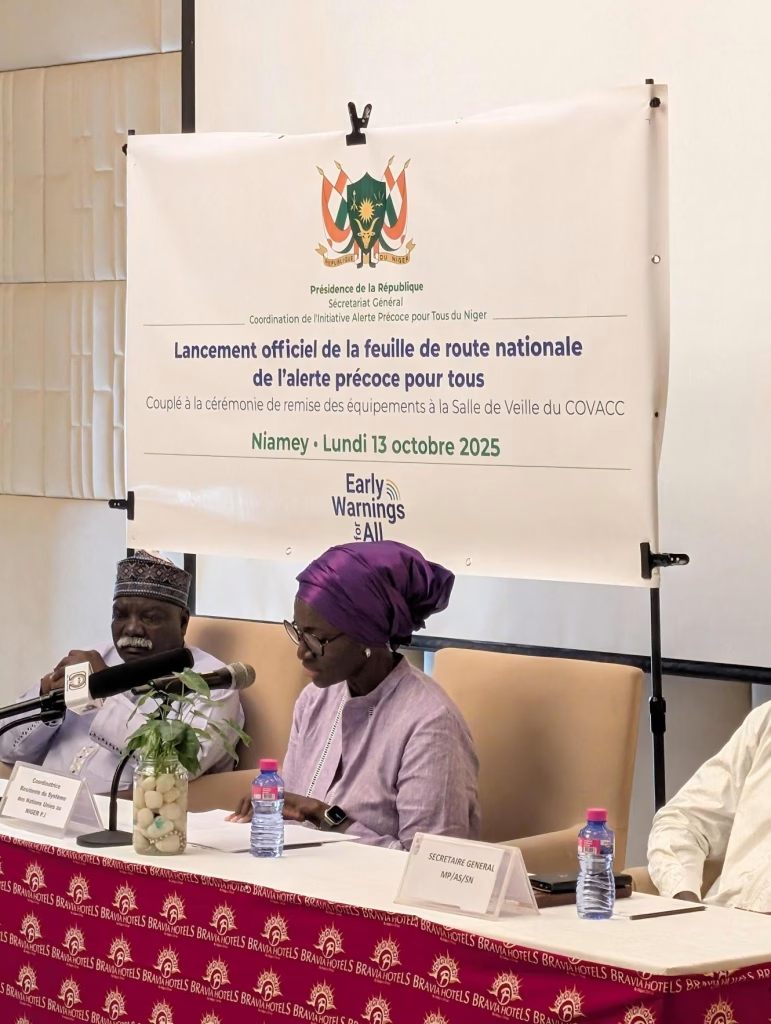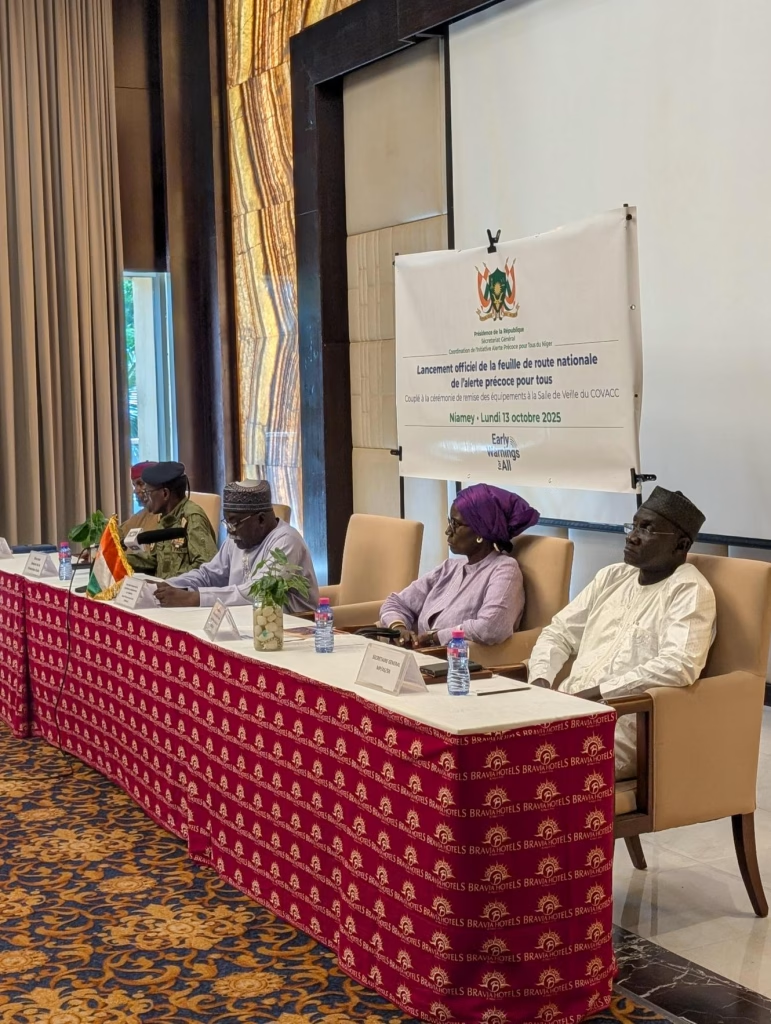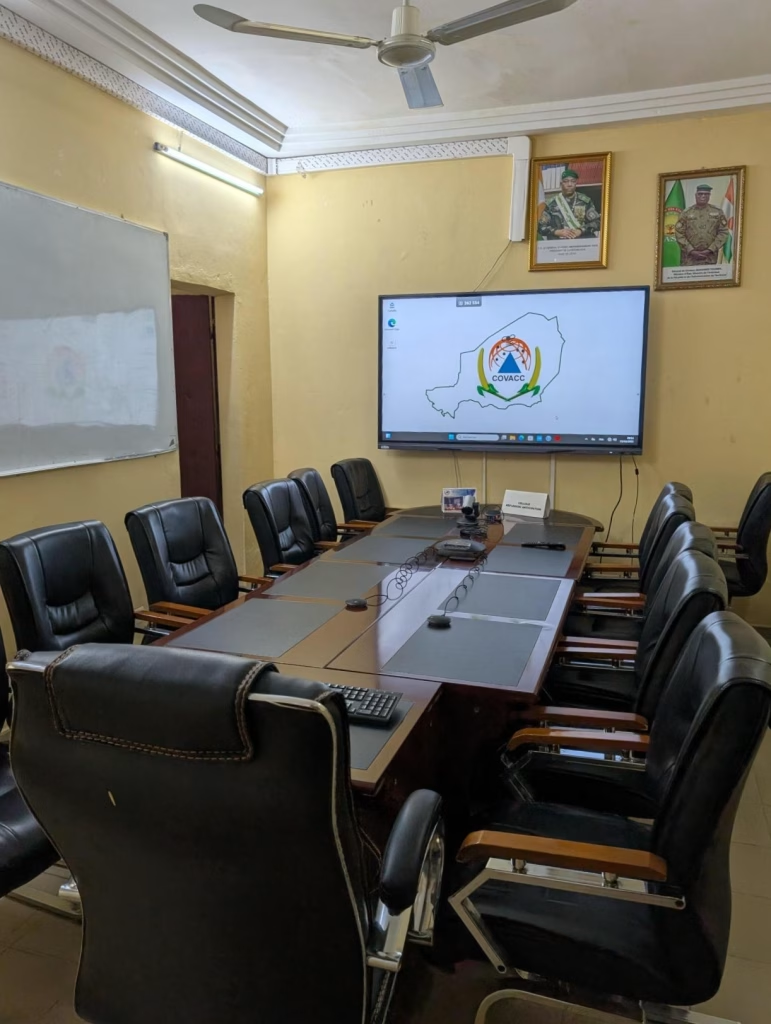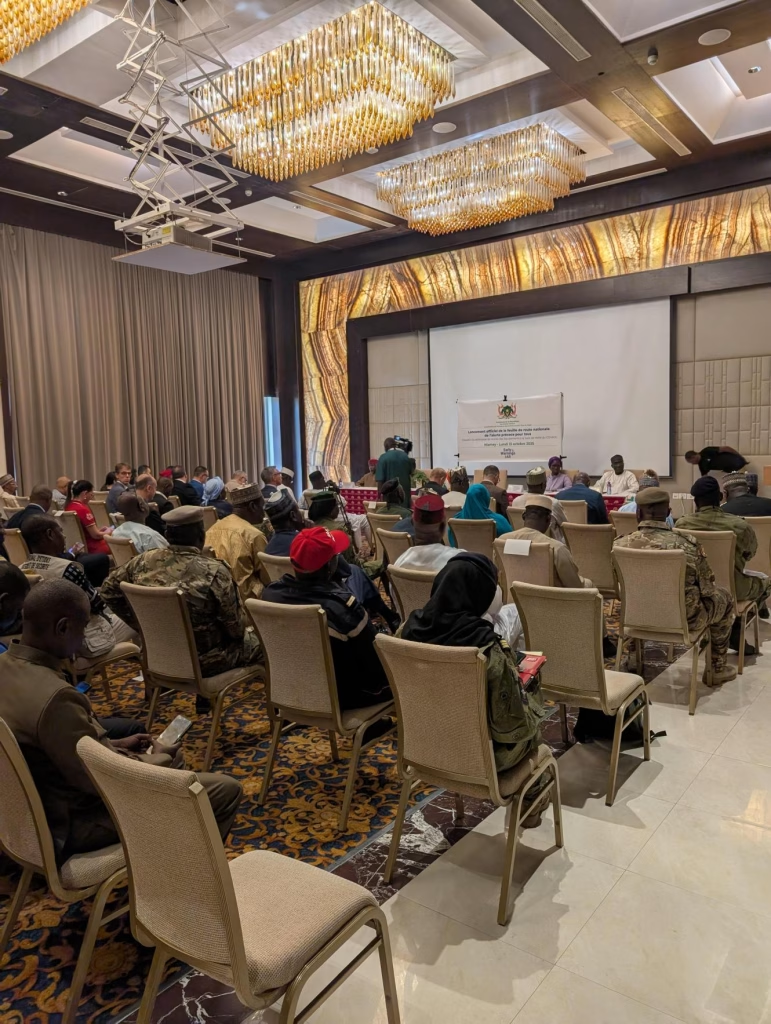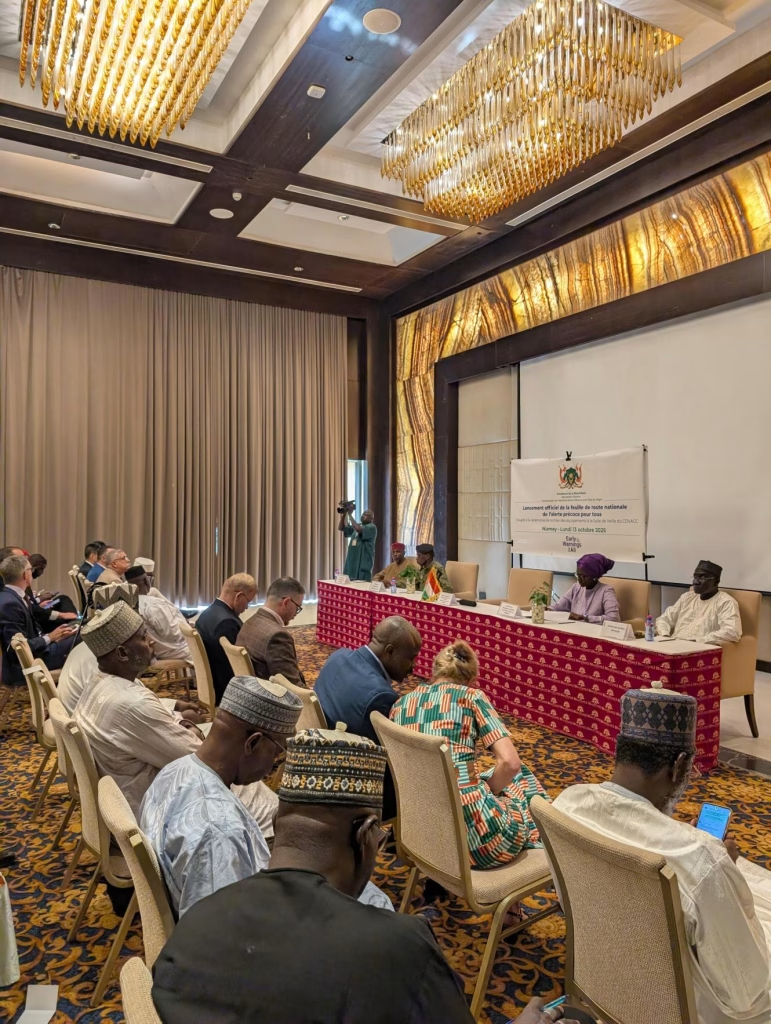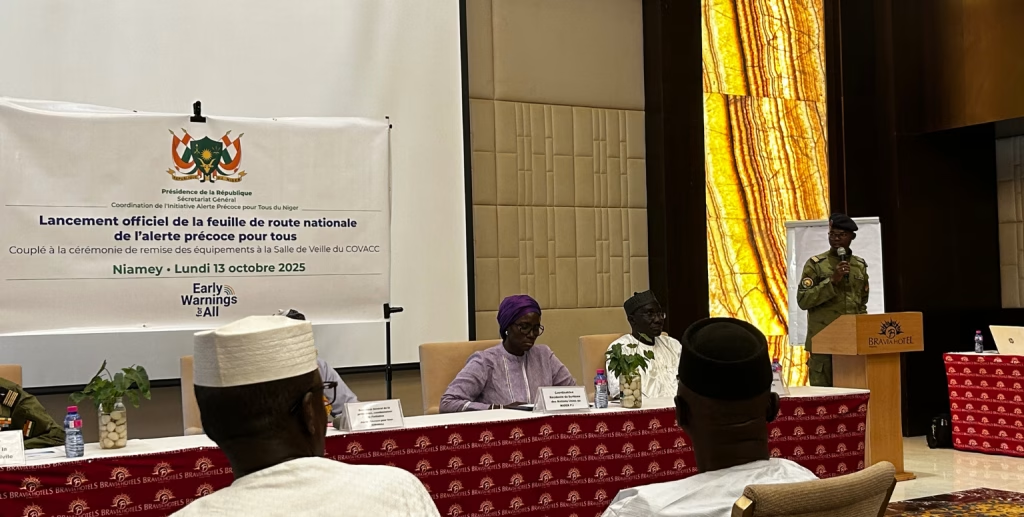On 13 October 2025, the International Day for Disaster Risk Reduction, Niamey hosts an event that embodies the concrete meaning of this year’s UN message: “Fund Resilience, Not Disasters.”
The 2025 theme underscores the urgency of shifting focus from post-disaster responses to preventive investments in risk reduction and resilience—an effort that takes tangible form through the strengthening of early warning systems, institutional coordination, and risk-informed planning, all central to the action of Niger and its international partners.
On this day, Niger officially launches its national roadmap for the Early Warnings for All initiative—the country’s strategic plan for developing a multi-hazard early warning system—and inaugurates the new technical infrastructure of the Situation Room of the Centre for Crisis Surveillance, Alert, and Management (COVACC).
The initiative is part of the continental AMHEWAS programme – African Multi-Hazard Early Warning Systems and Early Action, promoted by the African Union Commission with the support of UNDRR and the Italian Cooperation, and with CIMA Research Foundation as one of the main technical partners.
A Message of Resilience for the International Day for Disaster Risk Reduction
Celebrated every year on 13 October, the International Day for Disaster Risk Reduction represents a global moment of reflection on progress towards greater capacity for prevention and response to natural and climate-related risks. The theme, “Fund Resilience, Not Disasters,” calls for investing resources, knowledge, and technology to strengthen the resilience of systems and communities, rather than dedicating them to managing emergencies after they occur.
Within this context, Niger—a country exposed to complex hydrometeorological risks such as floods, droughts, and food crises—takes an essential step toward building a national early warning system that can also be integrated into continental mechanisms across Africa.
The launch of the National Roadmap for Early Warnings for All (EW4All), validated in May 2025, marks the shared vision between the Government of Niger and its partners to extend protection to the most vulnerable populations through an approach based on four pillars: risk knowledge, monitoring and forecasting, warning dissemination, and response capability.
From Vision to Action: The COVACC Situation Room Renewed
During the Niamey ceremony, the presentation of the roadmap will be accompanied by the inauguration of the new technical infrastructure of the National Early Warning and Crisis Management Monitoring Room, hosted at the COVACC. The newly modernized equipment represents the operational heart of the national surveillance and emergency response system, and will be equipped with advanced information and communication tools provided thanks to the support of the Italian Agency for Development Cooperation and the technical assistance of CIMA Research Foundation.
The new monitoring centre, the result of a co-design process launched in 2024 with technical missions and training sessions coordinated by COVACC and CIMA Research Foundation, improves the collection and integration of meteorological and hydrological data, the communication of alerts, and real-time inter-institutional coordination.
Its inauguration on the same day as the Disaster Risk Reduction Day highlights the commitment of Niger and its partners to place prevention at the core of national development and resilience policies.
Simulating to Prepare: The Table-Top Exercise of 14–15 October
In the two days following the inauguration, the new room will host a Table-Top Exercise (TTX) to assess Niger’s early warning and early action system. The exercise, developed by CIMA Research Foundation and the Italian Red Cross in collaboration with COVACC and the main national institutions involved in risk management, will test the system’s capacity to translate risk information into timely and coordinated actions.
The main objective is to evaluate and strengthen Standard Operating Procedures (SOPs), verify communication flows, and enhance the coordinated response capacity among national institutions, local authorities, and humanitarian partners.
The simulation—built on realistic scenarios based on historical data on floods, droughts, and health crises—will involve key actors such as the General Directorate of Civil Protection (DGPC), the National Directorate of Meteorology (DMN), the General Directorate of Water Resources (DGH), and the National Mechanism for the Prevention and Management of Food Crises (DNPGCA).
Thanks to the combination of training, simulation, and post-event analysis, the TTX will provide operational and technical recommendations to optimize interoperability between national and regional systems, including integration with other AMHEWAS hubs, such as the Continental Climate Centre (ACMAD) and the Regional AGRHYMET Centre, responsible for West Africa. The lessons learned will form a solid foundation for evolving the national system toward a fully integrated early warning and early action model.
A Shared Commitment for Africa and the Future
Strengthening national early warning systems—such as those in Niger and Mozambique—represents a key component of the African and global strategy for disaster risk reduction. The AMHEWAS initiative promotes the creation of a network of interconnected situation rooms that share data, forecasts, and response strategies in real time. On 13 October, in Niamey, this vision becomes reality: a concrete step toward fulfilling the global Early Warnings for All commitment and the central message of the 2025 Day—investing in resilience to reduce the impact of disasters and build a safer future for everyone.
